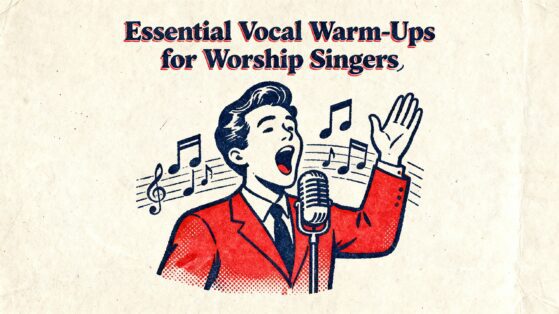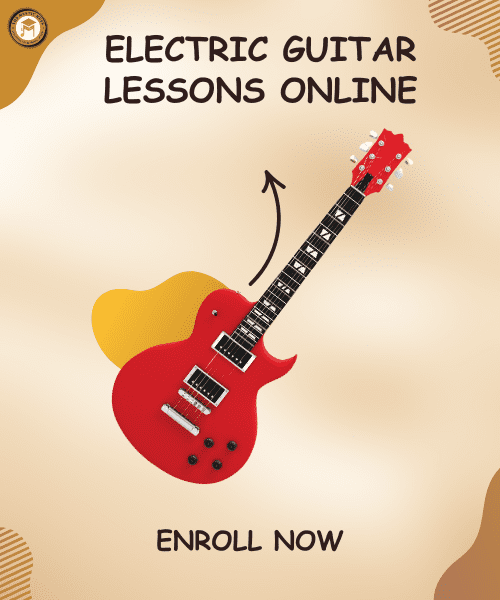How to Use a Whammy Bar Like a Pro | Mastering the Art of Expressive Tremolo Techniques
What Is a Whammy Bar?
The Whammy Bar, also known as a tremolo arm or vibrato bar, is a lever attached to the bridge of an electric guitar. When you push or pull this bar, you temporarily change the tension of the strings. As a result, the pitch of the notes you’re playing rises or falls. This simple mechanism gives you the ability to bend entire chords, create shimmering vibrato effects, or dive into explosive, dramatic pitch drops.
Although many call it a “tremolo” bar, it technically alters pitch (vibrato) rather than volume (tremolo). Despite the naming confusion, the term Whammy Bar has stuck, thanks to decades of rock and metal icons who made it part of their signature sound.
From Floyd Rose floating bridges to Bigsby tailpieces, there are several types of Whammy Bar systems—each offering a different level of control, flexibility, and tonal color. Therefore, choosing the right one for your playing style is the first step toward mastering it like a pro.
Why It Still Matters in Modern Music
While some view it as a vintage relic of 80s shred or surf rock, its musical relevance has only grown over time. Today’s artists across genres—from progressive rock and indie pop to experimental jazz—use it for everything from subtle inflections to otherworldly textures.
Because modern guitar tone is more expressive and adventurous than ever, knowing how to use it like a pro instantly expands your creative range. In fact, many guitarists today rely on the Whammy Bar to shape dynamics, convey emotion, and build drama—all without adding extra pedals or processing.
So, instead of fading away, it continues to evolve as a key ingredient in the language of modern electric guitar.
What Sets Pro Whammy Bar Players Apart?
Although anyone can install a Whammy Bar and start bending notes, true mastery lies in precision, control, and musical intent. Pro players don’t just use this Bar for flashy tricks—they use it to shape phrases, enhance melodies, and evoke mood. Their touch is measured. Their timing is deliberate. And their technique always serves the song.
In contrast, beginners often overuse the Whammy Bar, relying on it for every bend or using it without thinking. As a result, the playing sounds sloppy or even out of tune. But once you learn to use it like a pro, you can add nuance and personality to your playing with every motion.
Therefore, the path to its mastery begins with understanding—not only how it works, but also when and why to use it.
What You’ll Learn in This Guide
Because mastering the Whammy Bar requires both technique and taste, this guide breaks down everything you need to know. You’ll start with the basics—understanding the mechanics, setting up your gear, and performing simple vibrato dips. Then, you’ll move into expressive phrasing, advanced tricks, and genre-specific styles.
We’ll also cover common mistakes to avoid, how to maintain tuning stability, and how to practice using the Whammy Bar in a way that builds real confidence. With these techniques at your fingertips, you’ll be ready to use it like a pro—whether you’re playing in your bedroom, on stage, or in the studio.
Why Learning to Use a Whammy Bar Matters
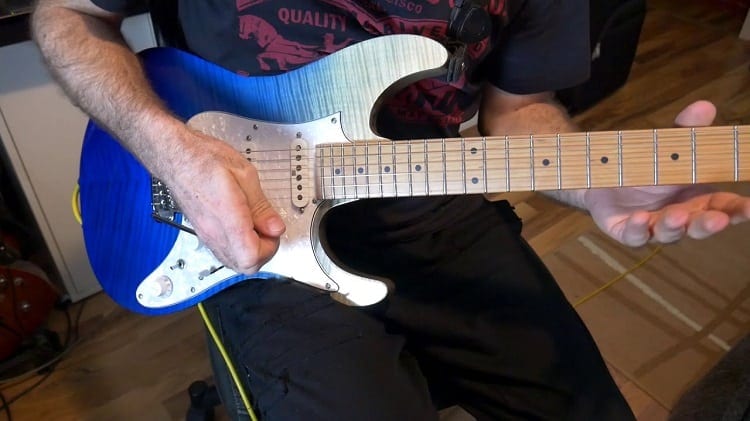
If you’ve ever watched a guitar solo that made your jaw drop, chances are the guitarist knew exactly how to use the Whammy Bar like a pro. This underrated tool holds the key to unmatched expressiveness, and yet, many players overlook or misuse it. However, when mastered, it can become one of the most exciting elements in your sonic arsenal.
Unlocking Expressive Potential
From subtle vibrato-like fluttering to jaw-dropping dive bombs, the Whammy Bar gives you a vocal quality that the fretboard alone cannot deliver. It adds life and color to your playing, making your guitar literally “speak.” So, if you aim to stand out as a performer, learning how to use a Whammy Bar like a pro gives you a competitive edge. You can play the same notes as everyone else, but the way you bend them with the Whammy Bar tells your unique story.
Why Every Guitarist Should Learn It
Although guitarists often prioritize scales and speed, expressive tools like the Whammy Bar bring character and emotion to your music. Therefore, you shouldn’t reserve it only for advanced playing or metal genres. Even beginners can and should learn how to use it like a pro from the start. By building it into your musical vocabulary early, you’ll develop stronger control, better pitch recognition, and a more unique playing style.
Genres That Embrace It
You might think the Whammy Bar only fits in metal or rock music, but that’s far from the truth. It has been a core part of surf rock, made famous by artists like Dick Dale. Moreover, artists in progressive rock, experimental jazz, and even alternative indie scenes use this bar creatively. So, no matter your genre, you can explore ways to use it like a pro and bring out fresh, innovative sounds
How Does a Whammy Bar Work?

Before you can learn how to use a Whammy Bar, you need to understand how it works. While it may seem like a simple metal arm on your guitar, it connects deeply to the mechanical and musical functions of your instrument. Therefore, understanding its basics will help you use it more effectively and safely.
The Mechanics Behind It
The Whammy Bar is usually attached to a bridge system like a Floyd Rose, Bigsby, or vintage-style tremolo bridge. When you press the bar down, it reduces string tension, dropping the pitch of the notes you’re playing. When you pull it up, it increases the string tension, raising the pitch. Because of this, the it physically alters the tuning of all six strings simultaneously in real time.
So, when you’re thinking about how to use a Whammy Bar, it’s essential to understand how different bridge types react to your movements. Floating bridges allow for both upward and downward pitch changes, while vintage-style tremolos usually allow only downward movements. Therefore, knowing your gear becomes crucial before applying advanced techniques.
Components Involved in It’s Functionality
The Whammy Bar doesn’t operate in isolation. It works alongside several other components:
Bridge Springs: These counterbalance the string tension and determine how sensitive your Whammy Bar is.
Saddles and Bridge Plate: These connect directly with the strings and move as you engage the bar.
Nut and Tuning Machines: Since the Whammy Bar alters pitch, tuning stability relies heavily on these components.
If any of these parts are poorly set up, your Whammy Bar won’t function smoothly. So, for those who aim to use a Whammy Bar like a pro, maintaining your guitar hardware should be part of your routine.
Types of Whammy Bars You Should Know
When exploring how to use a Whammy Bar like a pro, understanding the different types is key:
Floyd Rose: Known for extreme pitch range and locking nut stability. Great for heavy dive bombs.
Bigsby: Offers smooth, vintage warbles often used in blues and rockabilly.
Vintage Synchronized Tremolo (Strat-style): Balances expressiveness with moderate pitch bending.
Kahler System: Allows silky smooth vibrato with a floating feel but needs careful setup.
Because each Whammy Bar system feels and responds differently, your technique must adjust accordingly. Hence, it’s worth trying various systems to find which suits your musical style.
Setting Up for Optimal Performance
Proper setup dramatically improves your ability to use the Whammy Bar like a pro. If the action is too stiff or too loose, your pitch control will suffer. Therefore, adjusting the tension springs in your guitar’s cavity and setting the correct string gauge are essential. Moreover, always lubricate the nut and check intonation after extensive use of the bar. These steps ensure smooth operation and reliable pitch return.
So, before diving into advanced Whammy Bar tricks, fine-tune your instrument and make sure your gear responds the way you need it to. That way, you’ll build confidence in using it expressively and precisely
How to Use Like a Pro in Your Solos
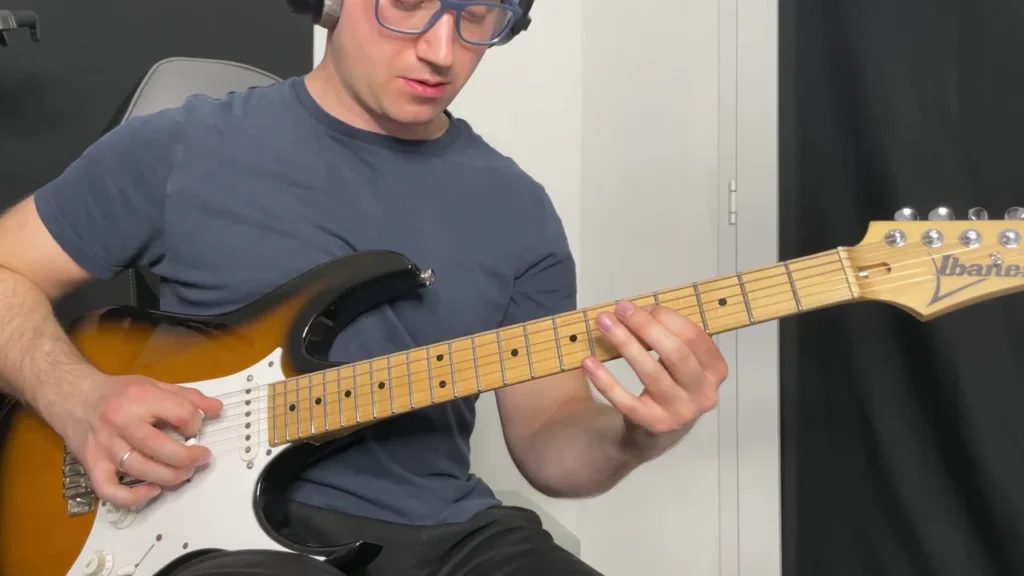
Now that you know what a Whammy Bar is and how it works, let’s explore how to actually use it like a pro during your solos. Instead of using it randomly, great guitarists apply Whammy Bar techniques with intention, musicality, and timing. This section will help you integrate the bar seamlessly into your lead playing, so every bend, dip, or vibrato adds value.
Start with Simple Dips
First, try using the bar for gentle dips at the end of sustained notes. As you strike the note, slowly push it down to create a smooth, expressive fall. Then, return the bar back to neutral in time with the beat. Although this may seem simple, it adds a vocal, almost crying quality to your tone. Since these dips are subtle, they work beautifully in ballads, blues, and even clean ambient sections.
Use for Building Tension
Next, experiment with pitch raises by pulling the bar upward. Doing this builds musical tension and makes the listener feel anticipation. You can sustain a note and then gently lift the pitch to lead into the next phrase or a climactic bend. Because this upward pull mimics the human voice rising in emotion, it’s incredibly effective when used right before a powerful riff or melodic shift.
Practice Vibrato Techniques
If you want to sound truly expressive, practice adding vibrato using the bar instead of your fretting hand. Lightly press and release the bar in rhythmic waves, matching the tempo of the song. This technique, often called “fluttering,” brings an elegant shimmer to clean tones and sustained leads. Since traditional finger vibrato can feel limited on some notes, using this bar allows more fluid and exaggerated control.
Sync Movements with Your Phrasing
To truly use the Whammy Bar like a pro, you must learn to integrate it with your musical phrasing. For example, if you’re ending a lick, use a quick bar dip to close the phrase with flair. Alternatively, during a legato run, use a subtle bar pull in the middle to create an unexpected tonal wave. These integrations help your solos flow with greater emotional contour. Because phrasing is everything in soloing, syncing your bar moves with your lines elevates your overall performance.
Combine Picking Techniques with Use
Lastly, try pairing the bar with different picking styles. For example, play pinch harmonics and add a bar dip immediately after to create screaming, squealing notes. Or, tap a high note on the fretboard and dive the pitch dramatically with the bar for a liquid-like effect. Since advanced players combine multiple techniques seamlessly, practicing this integration will help you use the Whammy Bar like a pro in complex, modern solos.
Tips to Use the Whammy Bar Like a Pro | Fine-Tune Your Technique
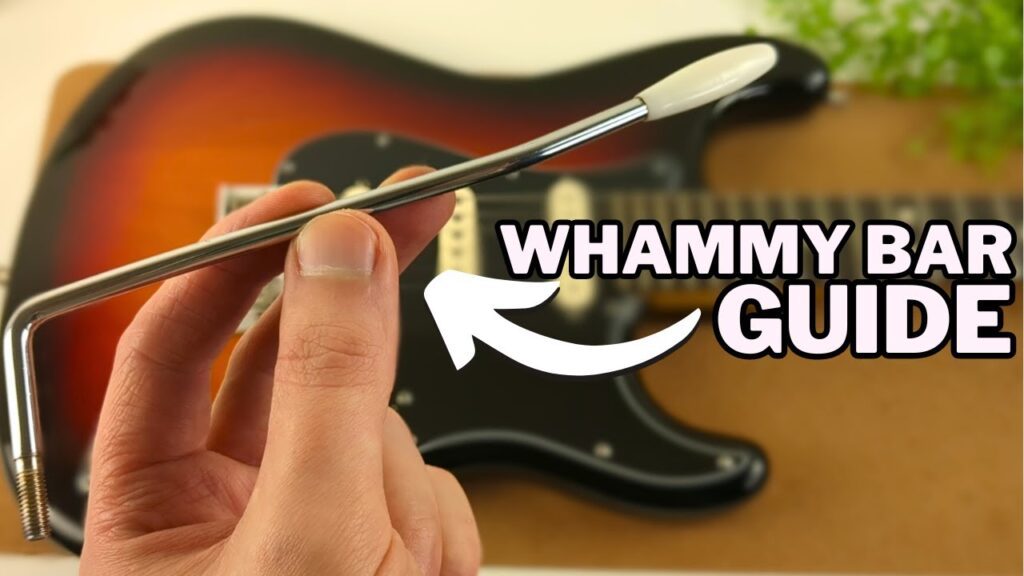
Once you’ve begun incorporating the Whammy Bar into your solos, it’s time to refine your technique. After all, it doesn’t just involve pushing and pulling—it’s about control, subtlety, and taste. Let’s break down essential tips that help you avoid common pitfalls and master the bar with finesse.
Anchor Your Picking Hand for Maximum Stability
While using it, always anchor your picking hand near the bridge. This position gives you a stable base from which to move the bar without disturbing your picking accuracy. If you let your hand float freely, you might accidentally mute strings or misstrike notes. So, maintaining contact with the bridge keeps your movements efficient and your playing precise. As a result, you’ll find it easier to use the bar in faster passages.
Use Sparingly and Musically
Although it’s tempting to use the Whammy Bar in every measure, less is often more. Apply it strategically—perhaps only during the most emotional or dramatic moments of a song. When used too frequently, the effect becomes predictable and loses its power. Therefore, reserve this for places where they truly enhance the story you’re telling through music. By thinking musically, you’ll always know when and how to use it like a pro.
Pair with Harmonics for Unique Sounds
One trick that instantly sets your playing apart involves combining the Whammy Bar with harmonics. Hit a natural harmonic at the 5th, 7th, or 12th fret, then gently press or pull the bar. The pitch-bending effect creates shimmering overtones that resemble science-fiction soundscapes. This technique works especially well in ambient or cinematic music. Because this move requires precise control, mastering it helps you push the boundaries of what this bar can do.
Adjust Your Tremolo System for Best Results
If your bar feels either too stiff or too loose, adjusting the bridge springs is crucial. Too much tension will make it hard to bend the pitch, while too little can make the bar overly sensitive. So, open the back of your guitar and tighten or loosen the springs to find the balance that suits your playing style. Additionally, use the correct string gauge to complement the bridge’s response. Once everything feels right, you’ll be able to use the bar like a pro without fighting your hardware.
Avoid Tuning Issues by Returning the Bar Smoothly
One of the biggest mistakes players make is not returning the bar to its resting position carefully. If you let it snap back abruptly, the strings may catch or go slightly out of tune. To avoid this, always guide the bar back gently after every dip or pull. In addition, keep the nut and saddles well-lubricated so the strings glide back into pitch naturally. By taking these small steps, you’ll maintain tuning integrity and use the Whammy Bar effectively during live sessions or long studio takes.
Advanced Tricks to use a Whammy Bar
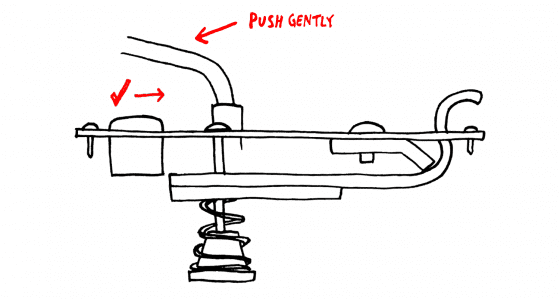
Once you’ve mastered the foundational techniques, it’s time to step into more advanced territory. These next-level tricks will help you stand out from the crowd and develop your signature sound. You can unlock sonic textures and performance styles that can electrify any audience.
Dive Bombs for Maximum Impact
Dive bombs are one of the most dramatic uses of the bar. To execute one, strike a high note—often with added distortion—and then press the bar all the way down. This sends the note plunging in pitch, mimicking the sound of a plane crashing or a monster growl. Because this trick is so powerful, it works best when used sparingly to punctuate key moments in a solo or bridge. This technique is essential in metal or hard rock.
Squeals with Its Pull-Ups
By combining pinch harmonics with aggressive Whammy Bar pulls, you can create high-pitched squeals that cut through the mix. Hit the harmonic using your thumb technique, and instantly pull the bar upward for a screaming, expressive sound. These squeals are staples in shred, metal, and glam rock genres. Therefore, practicing these often will refine your timing, control, and tone—all critical during high-speed performances.
Dissonant Dives for Experimental Soundscapes
If you’re looking for edgy or cinematic effects, try pressing down the bar while fretting dissonant intervals—like minor seconds or tritones. Then, return to pitch slowly or manipulate the bar with erratic motion. This creates a chaotic, tension-filled atmosphere that’s perfect for avant-garde or horror-inspired music. So, when you want to go beyond melody and into raw sound design, the Whammy Bar offers an endless palette of possibilities.
Whammy Bar + Delay + Reverb = Infinite Sustain
Another pro-level trick involves using the bar in tandem with delay and reverb pedals. Sustain a note, activate the effects, and then move the bar slowly to morph the pitch and texture. The delay repeats will echo every bend, while reverb fills the space with a dreamy wash. Since this combo creates atmospheric layers, it’s widely used in ambient, post-rock, and cinematic genres. If you love sound exploration, this is how you use the bar in studio sessions.
Tapped Harmonics with Its Dips
This trick is both flashy and musically rich. Tap a harmonic on the fretboard with your picking hand, then press the bar to create pitch drop effects that feel like ripples. When performed cleanly, it sounds like liquid metal. While it requires accuracy and coordination, mastering it proves you know how to use the Whammy Bar. Use this technique in solo sections to mesmerize your listeners and add a touch of virtuosity.
Common Mistakes to Avoid When Using a Whammy Bar
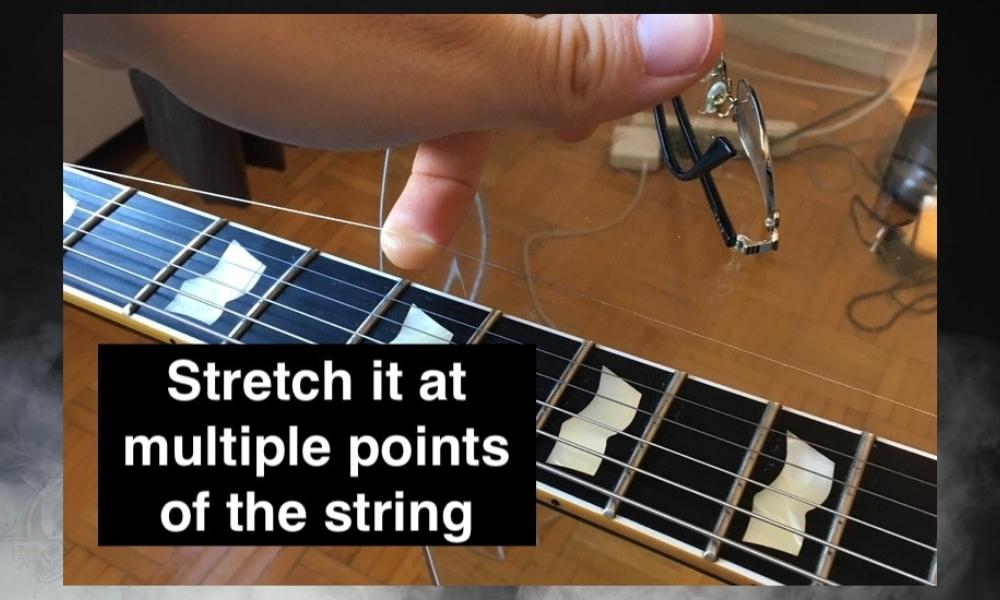
Although the Whammy Bar opens up incredible expressive options, it’s easy to misuse. These common mistakes not only ruin the musical effect but can also damage your tone or even your instrument. So, understanding what to avoid is just as important as knowing how to use it.
Overusing in Every Phrase
While it’s tempting to use it frequently, doing so often makes your playing sound chaotic and unfocused. Instead of impressing listeners, you may overwhelm them. Therefore, choose your moments wisely. Just like you wouldn’t shout every word in a conversation, you shouldn’t bend every note with the bar. Use it for emphasis—not as a crutch.
Not Returning the Bar Smoothly
Many players press the Whammy Bar down but forget to bring it back slowly. This often results in sharp or flat notes, disrupting your tuning and phrasing. To avoid this, always return the bar with care and intention. When you use it correctly, your pitch transitions feel seamless, never abrupt. So, be mindful of both the push and the release.
Ignoring Guitar Setup and Tuning Stability
Without proper setup, even the best techniques will sound sloppy. If your guitar isn’t intonated or lubricated correctly, it will cause tuning issues and string misalignment. Make sure your nut is friction-free, your bridge springs are balanced, and your strings are stretched. That way, you can focus on musical expression instead of technical glitches.
Using the Wrong Whammy Bar for Your Style
Not all Whammy Bars behave the same way. For example, a Bigsby bridge works great for vintage warbles, but it won’t deliver metal-style dive bombs. On the other hand, a Floyd Rose system can handle extreme pitch bends but may feel too sensitive for subtle jazz work. Therefore, pick the right bar based on your musical needs. When you choose wisely, you’ll find it easier to use the it like a pro in any context.
Neglecting Finger Technique
Although the bar adds a new layer to your sound, it shouldn’t replace core techniques like string bending, vibrato, or legato. Many beginners lean too heavily on the bar and skip developing these foundational skills. However, if you combine strong fingerwork with tasteful bar use, your playing will sound more complete. So, use the bar as an extension—not a replacement—of your technique.
How to Practice Using a Whammy Bar Like a Pro
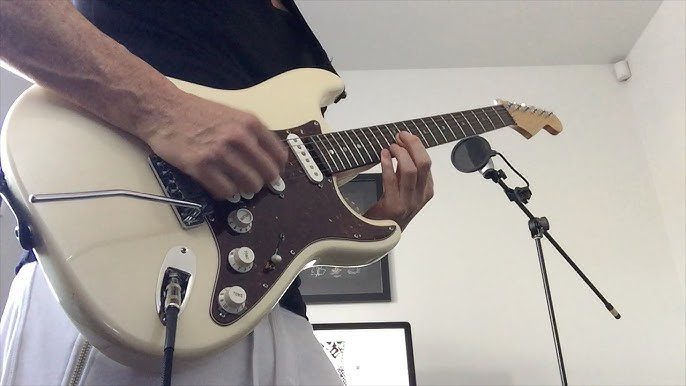
To truly master this expressive tool, you need to incorporate it into your daily practice. Although learning to use a Whammy Bar like a pro can seem overwhelming at first, a structured approach makes it manageable. So, let’s look at how you can practice Whammy Bar techniques efficiently and effectively.
Warm Up Without the It First
Before reaching for the bar, always begin by warming up with standard scales, bends, and vibrato using just your fingers. This reinforces your hand control and ear training. Because expressive phrasing starts from the fingers, mastering basic musical articulation helps you translate those skills into Whammy Bar use. Once your fingers feel relaxed and accurate, start adding the bar to your playing.
Practice Controlled Dips and Returns
Once warmed up, shift your focus to performing slow, steady Whammy Bar dips and returns. Hold a sustained note and gradually push the bar down, listening to the pitch bend carefully. Then, return it to pitch just as slowly. This builds muscle memory and pitch control. Although it seems simple, this exercise is crucial if you want to use the bar during live performances or recordings.
Record and Review
While playing, it’s easy to overlook small inconsistencies. That’s why recording yourself is so important. Use your phone or DAW to capture practice sessions that include Whammy Bar techniques. Afterward, listen back and identify where your dips, dives, or vibratos sounded clean—or where they disrupted the flow. This step provides clear feedback and accelerates your progress.
Incorporate Techniques into Real Songs
Rather than isolating the bar tricks, begin integrating them into actual pieces of music. Choose a few of your favorite solos or chord progressions, and experiment with subtle bar movements. Use it to end a phrase, build tension, or add shimmer. Since musical context is everything, practicing with real material helps you use the bar tastefully, rather than mechanically.
Challenge Yourself with Genre-Based Drills
Different music genres demand different Whammy Bar approaches. For instance, practice aggressive dive bombs with palm-muted metal riffs, then switch to gentle vibrato in a slow blues context. This contrast trains you to adapt and remain expressive no matter the style. By practicing genre-specific drills, you’ll build the versatility needed to use the bar in any setting.
Final Thoughts
Ultimately, the Whammy Bar is more than just a piece of hardware—it’s a tool of expression, emotion, and creative freedom. When used with skill and taste, it allows you to shape your sound in ways no other technique can. However, to use it effectively, you must be both intentional and disciplined.
So, don’t treat it like a novelty. Instead, study its mechanics, explore its emotional range, and blend it into your voice as a guitarist. From subtle vibratos to face-melting dive bombs, it adds depth and drama to your playing when used thoughtfully.
Therefore, keep practicing, stay curious, and always aim to express something meaningful with each push or pull. With time, you won’t just use the Whammy Bar—you’ll make it sing.
If the Whammy Bar has sparked your curiosity, imagine what more you can do with expert guidance. At The Mystic Keys, we’re passionate about helping you grow into the guitarist you’ve always dreamed of becoming. From your first bend to your cleanest solo, we’re right here with you.
✨ Discover your Music potential With Us
🎸 Explore our Electric Guitar Lessons Online and start making every note count.
Because every great guitarist started with one decision—to begin. Make that decision today.
Related Blogs
Is electric guitar difficult? | Exploring Essential Techniques
Learning the electric guitar is a journey that captivates many aspiring musicians with its powerful sound, unique expression, and the promise of achieving a sense of musical independence.
Should I Learn Acoustic or Electric
Guitar?
Choosing between an acoustic guitar and an electric guitar can be a pivotal decision for aspiring musicians. Learn Acoustic Guitar or Electric Guitar? Each type of guitar has unique features, sounds, and playing styles that cater to different preferences and genres.
Can You Learn Electric Guitar in
3 Months?
Learning the electric guitar can be an exhilarating journey. The thrill of creating music, expressing yourself, and mastering new skills can be deeply rewarding. However, many aspiring guitarists wonder: Can you learn electric guitar in 3 months?








